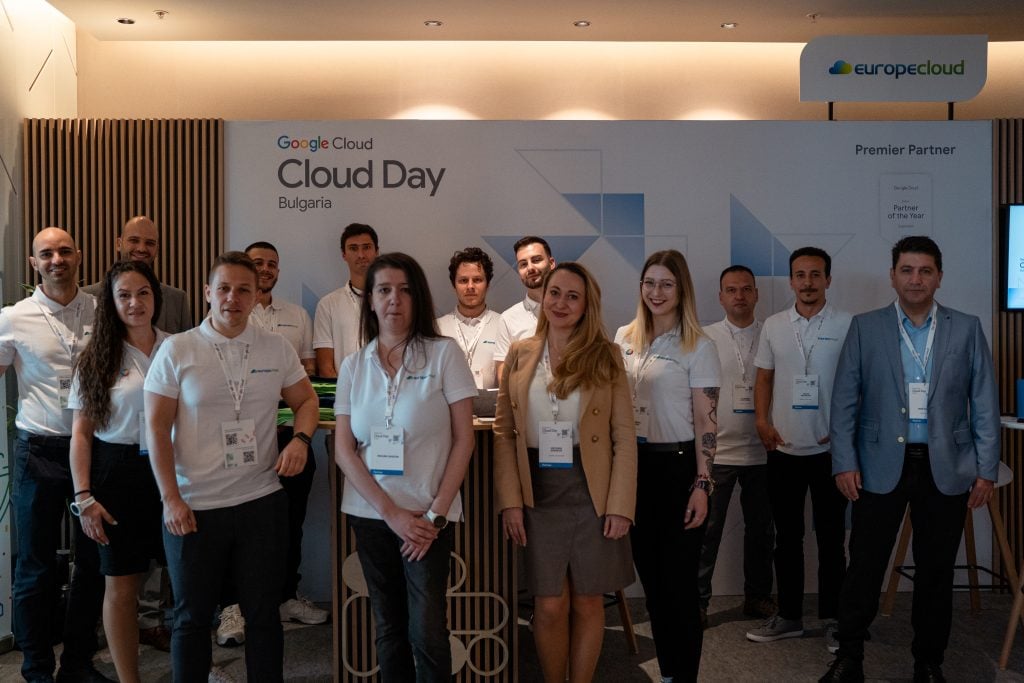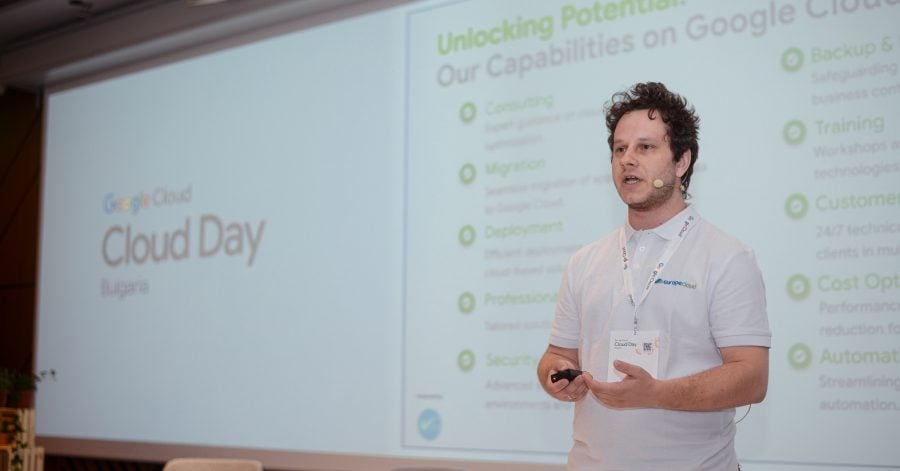This year’s Google Cloud Day Bulgaria made one thing clear: for a growing number of companies across Central and Eastern Europe, the cloud is no longer just infrastructure. It’s the foundation for global product delivery, real-time data automation, and AI readiness.
Held in Sofia, the event gathered cloud architects, enterprise leaders, and innovation teams to exchange ideas on how to scale with speed, ensure data compliance, and unlock new growth models. Europe Cloud joined, contributing to sessions and on-stage discussions and observing firsthand how the region’s priorities are evolving.
One of the clearest signals from this year’s program was the shift from viewing the cloud just as a cost center to treating it as a core capability. Where once the conversation focused on migration and optimization, now it centers around architectural flexibility, AI integration, and long-term resilience. Across multiple panels, participants explored how to design cloud environments that enable rather than limit – particularly when it comes to data governance and regional compliance requirements.
One key theme that emerged was the balancing act between global reach and local control. As regional regulations tighten, cloud-native teams are designing systems that respect data residency and access controls from day one.
The cloud’s role in powering the energy transition was also a recurring theme. From residential solar systems to real-time energy monitoring and automation, cloud-native infrastructure is increasingly supporting decentralized solutions that combine hardware, software, and intelligence in new ways.

From Sofia to the World: Scaling IoT with Shelly Group
These shifts came into focus during a session hosted by Europe Cloud and the company’s client Shelly Group, titled “Scaling IoT Globally: Shelly & Europe Cloud’s Cloud-Driven Innovation on GCP.”
Mircho Mirchev, Head of Integration at Shelly Group, and Kaloyan Siryiski, Cloud Architect at Europe Cloud, reflected on how the company scaled from three to over twenty million IoT devices globally – and the infrastructure choices that enabled that growth. As Mirchev explained, Shelly adopted a hybrid model from the start: giving users the option to run devices locally (via platforms like Home Assistant) while also offering cloud-connected services for automation, analytics, and smart integrations.
What makes the challenge particularly complex is the nature of Shelly’s infrastructure: devices stream changes in real time, requiring systems that can process, store, and act on data without delay. With energy monitoring and automation now bundled into residential solar and battery deployments, the data volumes – and user expectations – are rising quickly. The system built on Google Cloud, supported by Europe Cloud, uses services like BigQuery, Pub/Sub, and Vertex AI to keep performance stable and costs predictable.
Security and compliance have also been critical. Many of Shelly’s users demand transparency around data storage and location – a request the company can now answer clearly. “Saying the data is stored in Belgium covers an important part of the compliance checklist,” Mirchev shared during the session.
A Region Growing into Its Cloud Ambitions
From conversations at the booths to technical sessions and main stage panels, one pattern is becoming visible across the CEE region: organizations are not just adopting cloud tools – they’re building differentiated capabilities on top of them. Whether enabling AI, transforming user experiences, or expanding across markets, companies are making cloud infrastructure part of their competitive edge.
As part of this ecosystem, Europe Cloud will continue supporting teams that build with ambition across industries, borders, and technology layers. What we saw at Google Cloud Day Bulgaria 2025 was not just momentum. It was a sign that the region’s cloud-native future is already being written.








